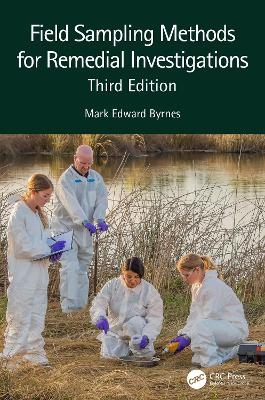
Field Sampling Methods for Remedial Investigations
CRC Press (Verlag)
978-1-032-03301-3 (ISBN)
This book provides guidance, examples, and/or case studies for the following subjects:
Implementing the EPA’s latest Data Quality Objectives process
Developing cost effective statistical & non-statistical sampling designs supporting all aspects of environmental remediation activities, and available statistical sample design software
Aerial photography, surface geophysics, airborne/surface/downhole/building radiological surveys, soil gas surveying, environmental media sampling, DNAPL screening, portable X-ray fluorescence measurements
Direct push groundwater sampling, well installation, well development, well purging, no-purge/low-flow/standard groundwater sampling, depth-discrete ground sampling, groundwater modeling
Tracer testing, slug testing, waste container and building material sampling, pipe surveying, defining background conditions
Documentation, quality control sampling, data verification/validation, data quality assessment, decontamination, health & safety, management of investigation waste
A recognized expert on this subject, author Mark Byrnes provides standard operating procedures and guidance on the proper implementation of these methods, focusing on proven technologies that are acknowledged by EPA and State regulatory agencies as reputable techniques.
Mark E. Byrnes, RG, RHG, HS-PMP, is a senior environmental scientist and project manager working for the Central Plateau Cleanup Company at the Hanford Nuclear Reservation, where he is responsible for the groundwater characterization of one of the largest chlorinated solvent plumes in the world. Mark has over 30 years of experience overseeing the design and implementation of statistical and nonstatistical environmental sampling programs to support site characterization, waste characterization, risk assessments, feasibility studies, and remedial designs. He received his Master of Science degree in geology/geochemistry from Portland State University (Oregon), and his Bachelor of Arts degree in geology from the University of Colorado (Boulder). Mark is a registered geologist and hydrogeologist in the State of Washington. He is the author of the earlier 2009 and 1994 editions of this book which have been used as textbooks at many universities across the country, including Georgia Institute of Technology. He is also the author of the 2003 Lewis Publishers book titled Nuclear, Chemical, and Biological Terrorism: Emergency Response and Public Protection, and the 2001 Lewis Publishers book titled Sampling and Surveying Radiological Environments.
1. Introduction 2. Summary of Major Environmental Laws and Regulations 3. Designing a Defensible Sampling Program 4. Field Investigation Methods 5. Sample Preparation, Documentation, and Shipment 6. Quality Control Sampling 7. Data Verification and Validation 8. Data Quality Assessment 9. Equipment Decontamination 10. Health and Safety 11. Management of Investigation-Derived Waste Appendix
| Erscheinungsdatum | 15.09.2022 |
|---|---|
| Zusatzinfo | 33 Tables, black and white; 76 Line drawings, black and white; 47 Halftones, black and white; 123 Illustrations, black and white |
| Verlagsort | London |
| Sprache | englisch |
| Maße | 156 x 234 mm |
| Gewicht | 249 g |
| Themenwelt | Naturwissenschaften ► Biologie ► Ökologie / Naturschutz |
| Technik ► Bauwesen | |
| Technik ► Umwelttechnik / Biotechnologie | |
| ISBN-10 | 1-032-03301-0 / 1032033010 |
| ISBN-13 | 978-1-032-03301-3 / 9781032033013 |
| Zustand | Neuware |
| Informationen gemäß Produktsicherheitsverordnung (GPSR) | |
| Haben Sie eine Frage zum Produkt? |
aus dem Bereich


